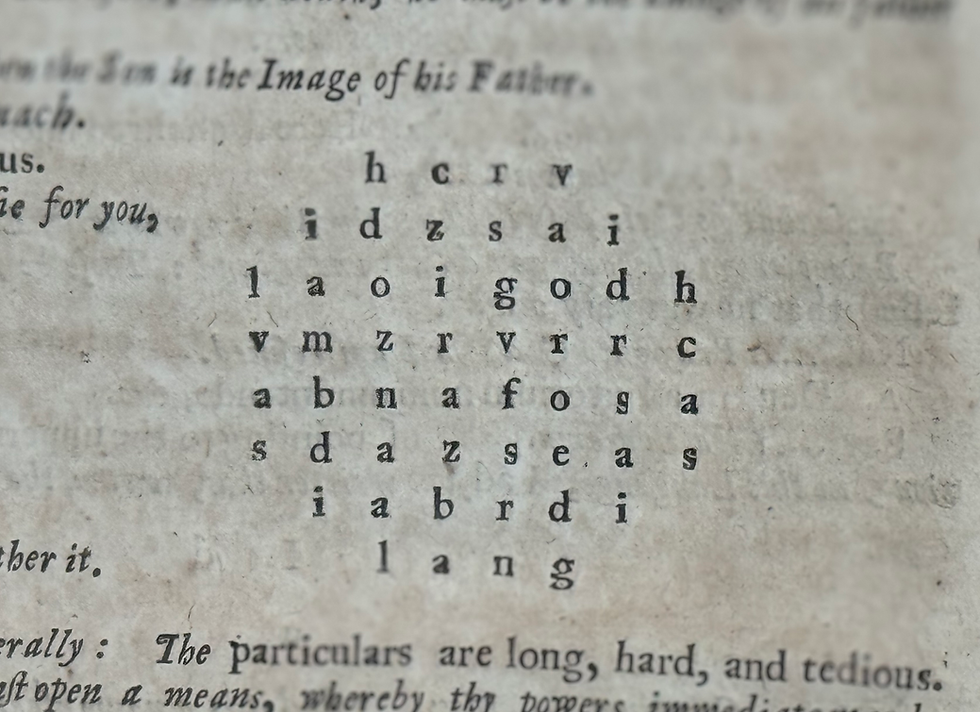Combining Tai Chi and Golden Dawn Ritual Metaphysics
- Pat Zalewski

- Oct 13
- 4 min read
Updated: Oct 15

Combining Tai Chi with Golden Dawn ritual work offers a powerful synergy: Tai Chi grounds and refines your energy body, while Golden Dawn rituals focus and elevate your spiritual consciousness, together enhancing clarity, vitality, and magical effectiveness.
Practicing Tai Chi alongside Golden Dawn ritual work creates a dynamic balance between Eastern and Western esoteric systems. Tai Chi cultivates Chi through slow, intentional movement and breath control, especially when focused at the dantien (specific center of gravity) the lower abdominal energy center. This builds a strong energetic foundation, stabilizing the body and calming the mind. It enhances physical health, emotional resilience, and energetic sensitivity, which are crucial for effective magical practice. The breath-centered awareness developed in Tai Chi helps anchor ritual work, allowing the practitioner to enter deeper states of concentration and presence.
Golden Dawn rituals, such as the Lesser Banishing Ritual of the Pentagram and the Middle Pillar exercise, rely on visualization, invocation, and symbolic gestures to align the practitioner with elemental and divine forces. These rituals activate the subtle energy body and elevate consciousness through structured magical frameworks. However, without a grounded physical practice, ritual work can become overly mental or unbalanced. Tai Chi complements this by rooting the practitioner in the body, enhancing the flow of energy through the meridians (likened to energy streams) and eight extra-ordinary vessels (likened to energy rivers), and preventing energetic overload.
Both Daoist sword forms and Golden Dawn rituals reflect a shared metaphysical goal: to transform the practitioner into a living conduit of cosmic forces. In Daoist practice, the sword is not merely a weapon, it becomes an extension of the practitioner’s Chi, a tool for harmonizing Heaven, Earth, and Human. Each movement is infused with intention, breath, and energetic alignment, activating the Eight Extraordinary Vessels to circulate vital essence and awaken latent spiritual potential. The practitioner doesn’t just perform a form; they embody a ritual dance that channels universal rhythms, often visualizing celestial flows or invoking elemental forces through posture and motion. The sword cuts through illusion, refines internal energy, and opens gateways to higher consciousness.
A Tai Chi sword form, in particular, refines this process through slow, deliberate arcs and thrusts that extend Chi beyond the body, harmonizing yin and yang while activating the deeper vessels. It becomes a moving meditation, sharpening intention and dissolving tension, while embodying the Daoist principle of effortless power. Central to this practice is the breath, which is consciously drawn into the dantien, the lower abdominal energy center considered the seat of internal power. By concentrating breath at the dantien, the practitioner grounds their awareness, stabilizes their movements, and amplifies their energetic output. The sword becomes not just a tool of defence or attack, but a transmitter of cultivated inner stillness.
In the Golden Dawn tradition, elemental weapons serve a similar purpose but through symbolic invocation and ritual structure. The wand channels fire and willpower, the cup holds water and emotion, the dagger cuts through air and illusion, and the pentacle grounds earth and manifestation. These tools are not passive symbols, they are activated through consecration, visualization, and spoken word, becoming vessels for divine archetypes. The Adept uses them to balance the elemental forces within and without, invoking spiritual entities, drawing protective circles, and directing magical energy with precision. Just as the Daoist sword form weaves energy through movement, the Golden Dawn ritual weaves energy through gesture, symbol, and sacred geometry.
Here too, breath plays a vital role. Rituals often begin with controlled breathing and visualization of light descending into the body, gathering at the solar plexus or dantien-like center before being projected outward through the elemental tools. This breath-centered focus anchors the magician’s intent, stabilizes the ritual field, and allows for precise energetic direction. Whether invoking divine names or tracing pentagrams, the breath is the silent carrier of will, linking the magician’s inner world to the outer forces they seek to command.
What unites these traditions is their understanding that transformation requires more than belief, it demands embodiment. Whether through the fluid spirals of a sword form or the structured cadence of a ritual, the practitioner must align body, mind, and spirit with the forces they seek to command. Breath, centered in the dantien, becomes the bridge between intention and manifestation. Both systems teach that mastery lies not in domination, but in resonance: becoming attuned to the elemental currents, the celestial patterns, and the deep rhythms of nature. In this way, the sword and the wand are not opposites, they are mirrors, reflecting two paths to the same summit of spiritual integration.
Together, these practices create a holistic path: Tai Chi strengthens and purifies the vessel, while Golden Dawn rituals fill it with light and intention. Breath becomes the bridge, drawn into the dantien during Tai Chi and projected outward during ritual invocation. This integration leads to greater energetic coherence, deeper mystical insight, and a more embodied spiritual experience. Practitioners often report increased vitality, sharper focus, and a profound sense of inner harmony when combining these disciplines




Comments